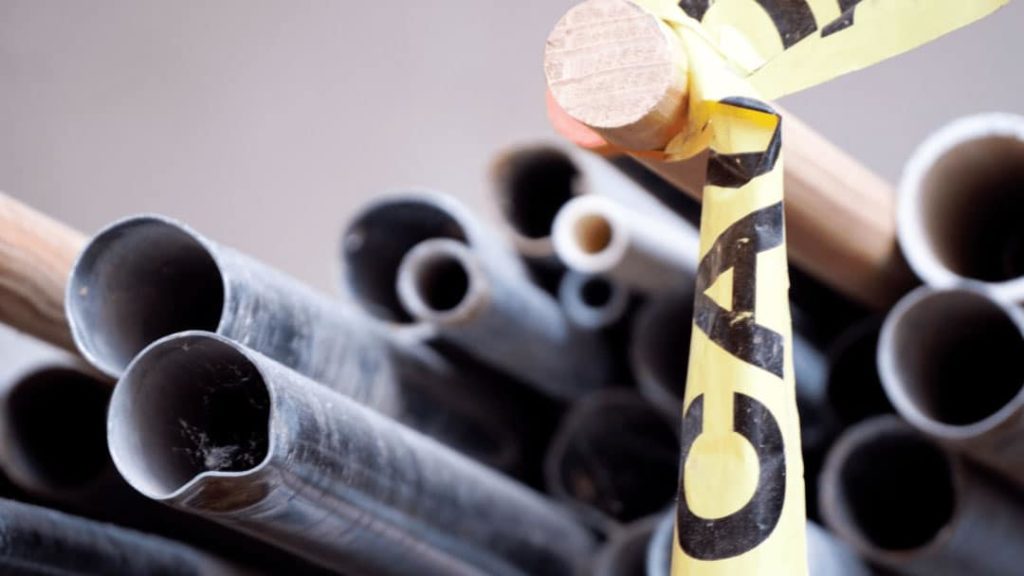Having the right-sized pipe supplies can make the difference between getting a job done on time and properly or requesting extra time and finances while you wait for the correct pipe size.
Pipe size not only refers to the length of the pipe and the diameter of the pipe but also the width of the pipe wall, otherwise known as “pipe schedule.”
This guide on pipe schedules will explain more about pipe schedules and how to determine what pipe schedule you need.
What Are Pipe Schedules?
A pipe schedule refers to the measurement of pipes based on the width of the pipe wall. The larger the schedule, the thicker the pipe wall. However, the thickness of the wall also depends on the diameter of the pipe.
All types of piping material come with a schedule rating. This includes PVC pipe, steel pipe, and copper pipe.
Basic Measurements and Terms
First, it’s a good idea to understand some of the basic measurements used when talking about the size of your pipe. Please see the following terms to learn what they mean.
- Nominal Pipe Size (NPS) – the size of the pipe based on the outside diameter- this does not consider the thickness of the wall or inside diameter.
- Outside Diameter (OD) – the size of the pipe from the very outer edge of one end to the other.
- Inside Diameter (ID) – the size of the pipe from the inside of the pipe wall to the inside of the opposite pipe wall. This measurement must match with pipes in order for them to fit together.
- Wall Thickness – thickness of the wall of the pipe, not considering the space in the middle.
Related Link: Most Popular Types of Metals and Their Uses
Schedule 40 and Schedule 80 Pipes
The (American Society for Testing and Materials’s (ASTM) two major pipe schedules are Schedule 40 and Schedule 80.
Schedule 40 pipes have the same outer diameter but different inner diameters to make up for the difference in thickness. The common outer diameter makes it possible for both pipes to connect when necessary. However, Schedule 80 pipes have a smaller inner diameter.
Schedule 40 Wall Thickness
See the following pipe wall thickness for Schedule 40 pipes:
- ¼” – 0.088
- ½” – 0.109
- ¾” – 0.113
- 1” – 0.133
- 1.5” – 0.145
- 2” – 0.154
- 5” – 0.258
- 10” – 0.365
Schedule 80 Wall Thickness
See the following pipe wall thickness for Schedule 80 pipes:
- ¼” – 0.119
- ½” – 0.147
- ¾” – 0.154
- 1” – 0.179
- 1.5” – 0.200
- 2” – 0.218
- 5” – 0.375
- 10” – 0.500
Do you know the pipe schedule you need? Learn more about South Austin Metals and how they can create pipes the perfect size every time with their experience and expertise.

Distinguish Between Schedule 40 and Schedule 80 Pipes
The easiest way to distinguish between Schedule 40 and Schedule 80 pipes is to read the label on the packaging. For another way to determine a pipe’s schedule rating, just look at the color. Schedule 40 pipes tend to come in white, while Schedule 80 pipes come in an off-white or gray color.
Pipe Schedule Applications
Schedule 40 pipes work best in low water pressure and temperature situations, while Schedule 80 pipes work best in high pressure and temperature situations due to their thicker pipe wall. Generally speaking, you will use Schedule 40 pipes for residential purposes and Schedule 80 pipes for commercial and industrial purposes.
Why Not Always Use Stronger Schedule 80 Pipes?
It’s important to remember that the inner diameter is smaller in Schedule 80 pipes, even though the outer diameter remains the same. This may slow down water flow. Plus, Schedule 80 pipes cost significantly more than Schedule 40 pipes.
With that being said, you also don’t want to use Schedule 40 pipes when you need a Schedule 80 pipe.
Additional Pipe Schedules
Pipes schedules don’t only come in Schedule 40 and Schedule 80. While those are the most popular, you may need to be aware of the other options available.
Additional Pipe Schedules Include:
- 5
- 5S
- 10
- 10S
- 20
- 30
- 40
- 40S
- 60
- 80
- 80S
- 100
- 120
- 140
- 160
To keep things as simple as possible, schedules fall under one of three categories: Schedule Standard (STD), Schedule Extra Strong (XS), and Schedule Double Extra Strong (XXS).
STD usually refers to Schedule 40 pipes, XS usually refers to Schedule 80 pipes, and XXS usually refers to Schedule 160 pipes.
Related Link: Ferrous & Non-Ferrous Metal: What’s the Difference?
South Austin Metals

South Austin Metals started from humble beginnings in 1971, with two small-town welders joining forces to create objects for clients out of metal. They fabricate all metal objects, including pipes made from different types of metals, including:
- Mild steel
- Aluminum
- Coten
- Expanded metal
If you need steel pipes in the Austin, Texas area, you can receive a new installation in just 6 – 8 weeks. Plus, you’ll know that you will get high-quality products that always arrive precisely as requested.
Conclusion
The two most common pipe schedules are Schedule 40 and Schedule 80, with Schedule 80 pipes having thicker pipe walls than Schedule 40 pipes. This makes Schedule 80 most suited for commercial and industrial purposes that require resistance to high water pressures and temperatures. Schedule 40 pipes work best in the home as they cost less and won’t impede water flow.
Do you need help determining the pipe schedule you need for your job? Contact a professional at South Austin Metals to get your questions answered.
Related Link: Bronze vs. Brass & Copper

